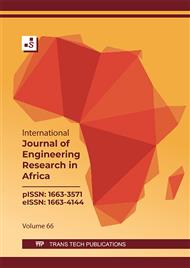p.1
p.19
p.29
p.45
p.61
p.75
p.91
p.111
p.129
Characterization of Boeing 777 Nose Landing Gear to Better Withstand Rough Landing
Abstract:
An important role a landing gear plays is that it aids in the landing and takeoff of aircraft. The landing gear must be designed in such a way that it can take these stresses in static and dynamic situations. This is to accommodate both rough and smooth landings that result from various loads acting upon it, such as drag force, vertical load, and side load. In the aviation industry, landing gear stress is a key concern, and different research in this field has previously yielded excellent results. However, the time has come to raise the bar even higher. This report will focus on the optimization of the Boeing 777's nose landing gear to better withstand rough landings. During the timeframe of this research, SOLIDWORKS was utilized to model and analyze various components of the landing gear. The results summarize that a single material should be avoided throughout the components of the landing gear. Components such as pistons with a larger stress allocation should be made of titanium alloy, while components with a lesser stress allocation should be made from aluminum alloy.Abstract. An important role a landing gear plays is that it aids in the landing and takeoff of aircraft. The landing gear must be designed in such a way that it can take these stresses in static and dynamic situations. This is to accommodate both rough and smooth landings that result from various loads acting upon it, such as drag force, vertical load, and side load. In the aviation industry, landing gear stress is a key concern, and different research in this field has previously yielded excellent results. However, the time has come to raise the bar even higher. This article will focus on the improvement of the Boeing 777's nose landing gear to better withstand rough landings. During the timeframe of this research, motion study in SOLIDWORKS 2020 (Stand-alone license) was utilized to model and analyze various components of the landing gear. The results summarize that a single material should be avoided throughout the components of the landing gear. Components such as pistons with a larger stress allocation should be made of titanium alloy, while components with a lesser stress allocation should be made from aluminum alloy.
Info:
Periodical:
Pages:
75-90
Citation:
Online since:
September 2023
Keywords:
Price:
Сopyright:
© 2023 Trans Tech Publications Ltd. All Rights Reserved
Share:
Citation:


